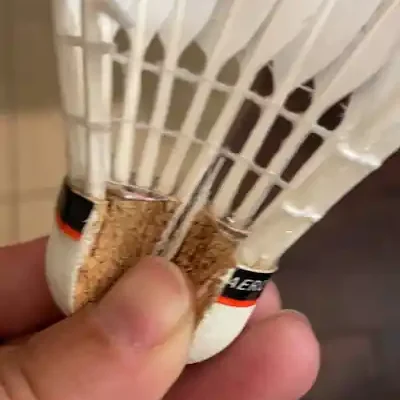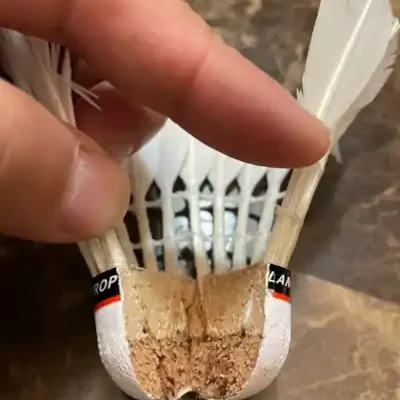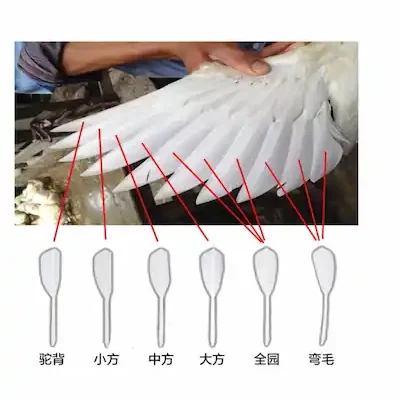Why Shuttlecock Prices Are Rising—and What Most Players Don’t Realize About It
If you’ve been playing regularly, you’ve probably noticed it—shuttlecock prices just keep climbing. And now, there’s more news turning heads in the badminton world.
Yonex recently announced that Korean women’s singles star An Se Young is officially their global shuttlecock ambassador. It’s a big move, and definitely exciting for fans.
But that announcement came with something a little less fun: an email to dealers stating that shuttlecock prices will rise again. Starting August 1, 2025, Yonex will increase prices across its entire shuttlecock line, citing higher export tariffs.
Naturally, players everywhere are asking: How can something as simple as feathers and cork be getting so expensive? Is it just inflation and brand hype—or is there more going on?
Let’s break it down.
- Feather Shortage: Why Premium Feathers Are Getting Harder to Find
Top-quality shuttlecocks are made from duck or goose feathers—but not just any feathers. The best ones come from the base of a goose’s wing. They’re stiff, strong, and shaped just right to give the shuttlecock that smooth, stable flight.
Here’s the catch: each goose only produces one or two feathers that meet top-grade standards. And since each shuttlecock requires 16 perfectly matched feathers, the demand adds up quickly.
Making things worse:
- Farming costs are rising
- Environmental regulations are tightening
- Bird flu outbreaks have disrupted the supply
Before feathers even reach the assembly line, they must be cleaned, sorted, graded, and treated. It’s a time-consuming process—and all of it adds cost.
Even top brands are struggling to secure enough Grade A feathers, which puts pressure on availability and ultimately, retail prices.
- Skilled Labor Still Matters: Handcrafted Quality Costs More
Shuttlecock production remains highly manual, particularly for tournament-grade models. Feathers must be carefully placed and glued by hand, and each shuttle is balanced for flight, spin, and consistency.
Add to this:
- Rising wages in China
- Labor shortages across factories
- Higher factory rejection rates (up to 30% for premium birds)
This is not mass-automated production—it’s still a craft. And that craftsmanship comes at a price.
It’s also why low-cost alternatives often cut corners or use rejected batches—something players don’t realize until it’s too late.

Sold by U.S.-authorized distributors — full cork head。

Non-official version — cork mix head, lower consistency
- Export-First Mentality: The Best Shuttles Don’t Stay in China
Here’s something many players don’t know: the highest-quality shuttlecocks rarely stay in China.
Instead, they’re shipped to countries like Malaysia, Indonesia, North America, Europe, Korea, and Japan, where players demand consistency and are willing to pay for it.
Why?
- Overseas buyers pay more, and they pay on time
- Tournaments abroad require flight stability and durability
- Brands like Yonex, Victor, LEIPAI, and Aeroplane have exclusive distributor relationships abroad
Many cheaper shuttlecocks sold in China are “export rejects,” domestic versions, or leftovers from export batches. Don’t be fooled by the same brand name—it doesn’t mean you’re getting the same product.
- Panic Buying and the Illusion of Scarcity
Beyond feathers and labor, market psychology is also playing a role.
Here’s how it works:
- Before a known price hike, some distributors start overstocking
- This creates artificial shortages
- Brands or sellers push “limited edition” or “exclusive batch” marketing
- Players panic-buy, thinking they won’t be able to restock later
In recent years, buyers from regions like India, Southeast Asia, and North America have tried purchasing shuttlecocks directly from factories in China. Their goal: lower prices and more control.
But here’s the twist: This demand surge signals to factories that global demand is booming—so they raise their base prices.
The irony? Trying to beat the system by buying direct from factories might actually be making things worse for everyone.
🏸 What This Means for Players
So, why are shuttlecock prices rising? It’s not just because of feathers. It’s a combination of:
- Scarce raw materials
- Higher labor costs
- Export-first strategies
- Market panic and overbuying
Instead of switching brands just to save a few dollars, focus on what really matters:
- Stable flight performance
- Consistent quality
- Trusted supply channels
- Access to real after-sales support
As a trusted authorized distributor in North America, we work directly with top-tier factories and brands to ensure players get the real deal—no factory seconds, no surprises.
You’re not just paying for feathers—you’re paying for confidence, consistency, and customer support when it matters most.

👉 Coming Up Next:
Is Expensive Always Better? How to Pick the Right Shuttlecock Without Getting Ripped Off
We’ll break down:
- Durability vs. flight stability
- What grading systems really mean
- How to spot factory seconds or fake birds
- When you’re overpaying—and when you’re really getting value
Stay tuned.

